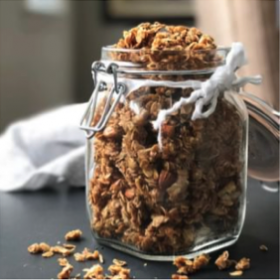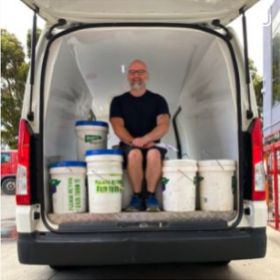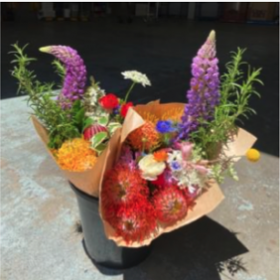Ingredients
½ cup (55g) dried sourdough breadcrumbs (or ½ cup/30g panko breadcrumbs)
3 tbsp extra virgin olive oil, plus an extra 4 tbsp
½ cup (80g) diced brown onion (about a quarter of an onion)
2 garlic cloves, minced
Pinch of chilli flakes (optional)
4 anchovy fillets, roughly chopped
2 tbsp chopped fresh oregano (or 1 tsp dried oregano)
Scant ¼ cup (40g) sultanas, chopped
2 tbsp salted capers, rinsed
1 tbsp tomato paste
1 x 400g can whole peeled San Marzano tomatoes, crushed
250g dried spaghetti
1 x 110g can sardines in olive oil
Zest and juice of half a lemon
Freshly cracked black pepper
Fine sea salt
Summary
We’ve got new, sustainably caught South Australian sardines from Little Tin Co, so to celebrate we’re adding another sardine spaghetti to our collection (never too many). This is a weeknight winner, with most of the ingredients probably already in your pantry. At first, we questioned the inclusion of sultanas, but trust us, chopped fine you don’t physically notice them, and their subtle sweetness takes the sauce to perfectly balanced territory!
Sardine Spaghetti
Bring a large pot of salted water to a boil for your pasta (see note).
Place another large pot over medium heat and add the extra 4 tablespoons of olive oil, together with the onion, garlic and a pinch of salt. Cook, stirring occasionally, until the onion starts to brown, about 10 minutes.
Add the chilli flakes (if using), anchovy fillets, oregano, sultanas, capers and tomato paste and fry for a further minute. Follow with the crushed tomatoes and stir to combine. Cook the sauce on a low heat while you boil the pasta.
Drop the spaghetti into the boiling water and cook until al dente.
While the pasta is cooking, split the sardine fillets and remove the backbone (some tins will come deboned). Add the fillets to the sauce.
When the pasta is cooked, use tongs to lift it out of the water and drop it directly into the pot with the sauce. Add 2-3 ladles of starchy pasta water. Stir vigorously to combine, using a wooden spoon or tongs, and cook over medium heat for another minute or two to coat the pasta in the sauce. Finish with the lemon zest and juice, a drizzle of olive oil and a good crack of pepper.
Divide the pasta between two bowls and top with grated parmesan and the toasted breadcrumbs.
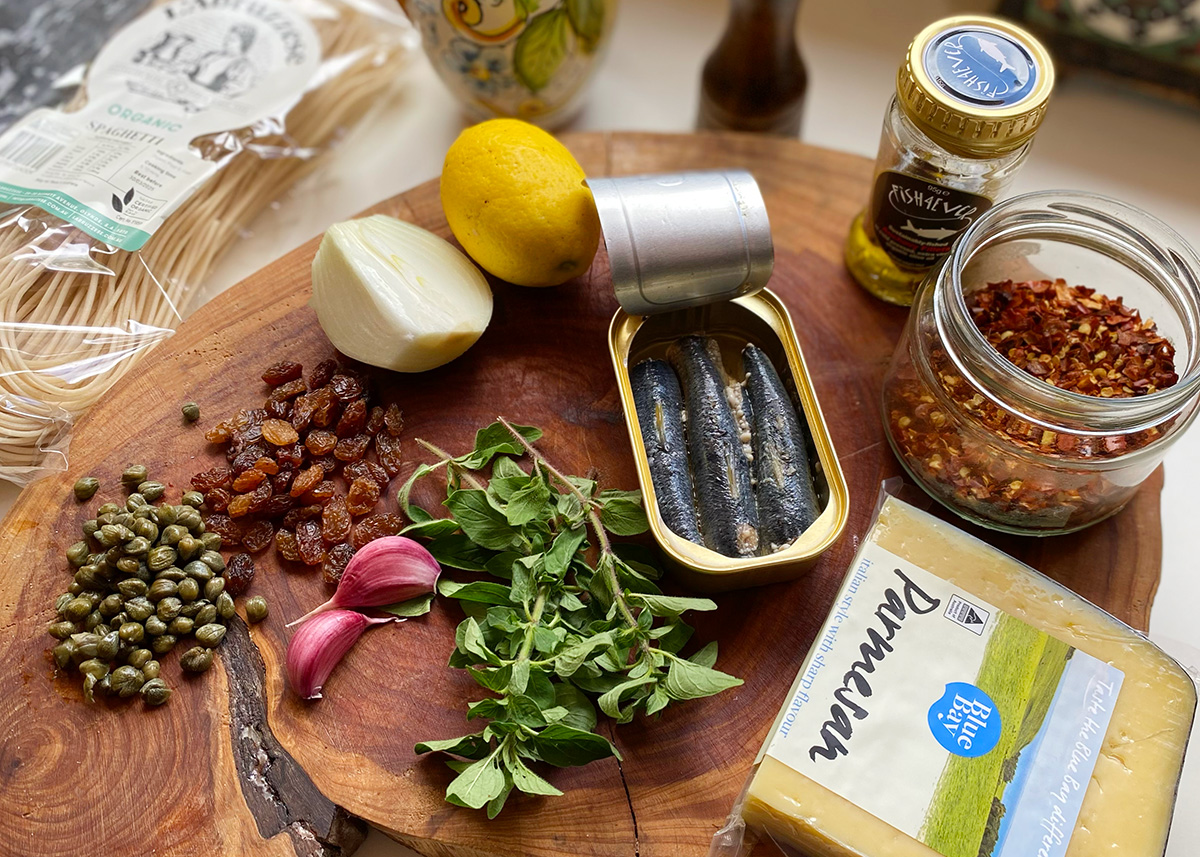
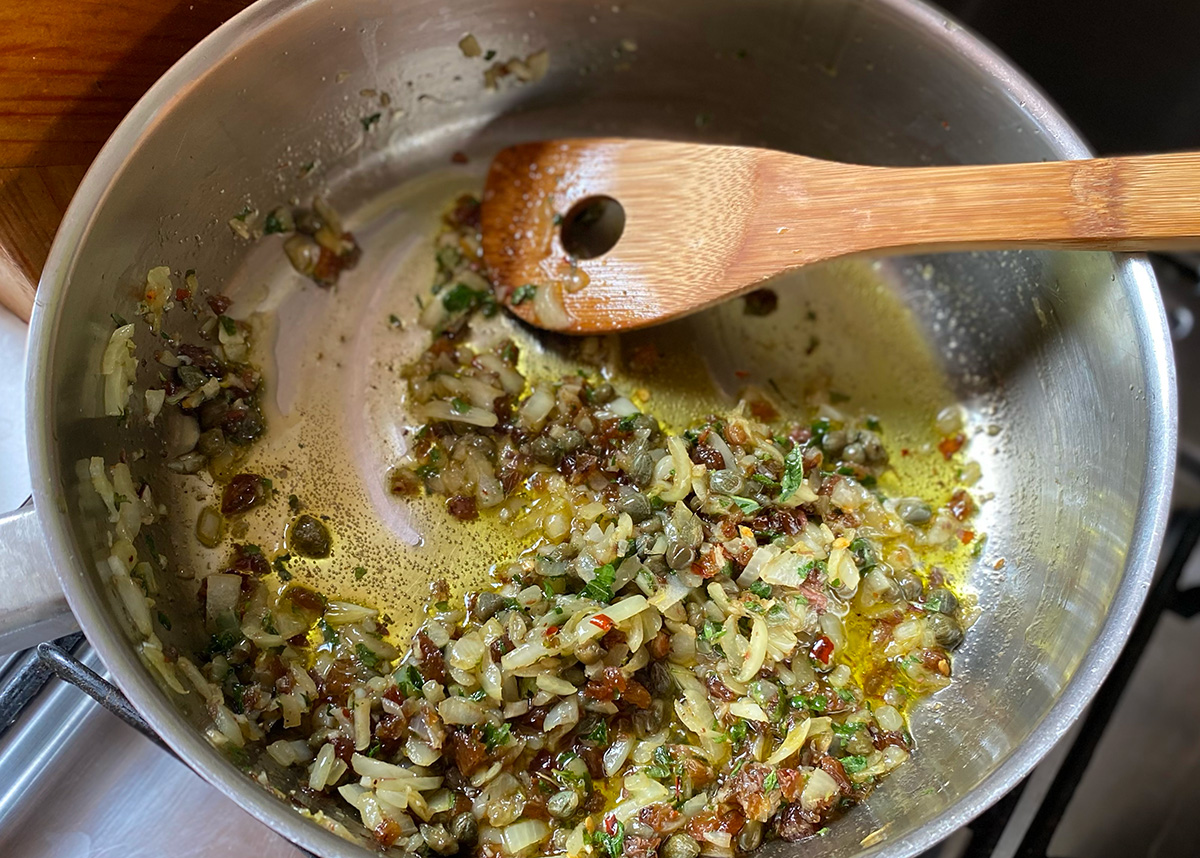
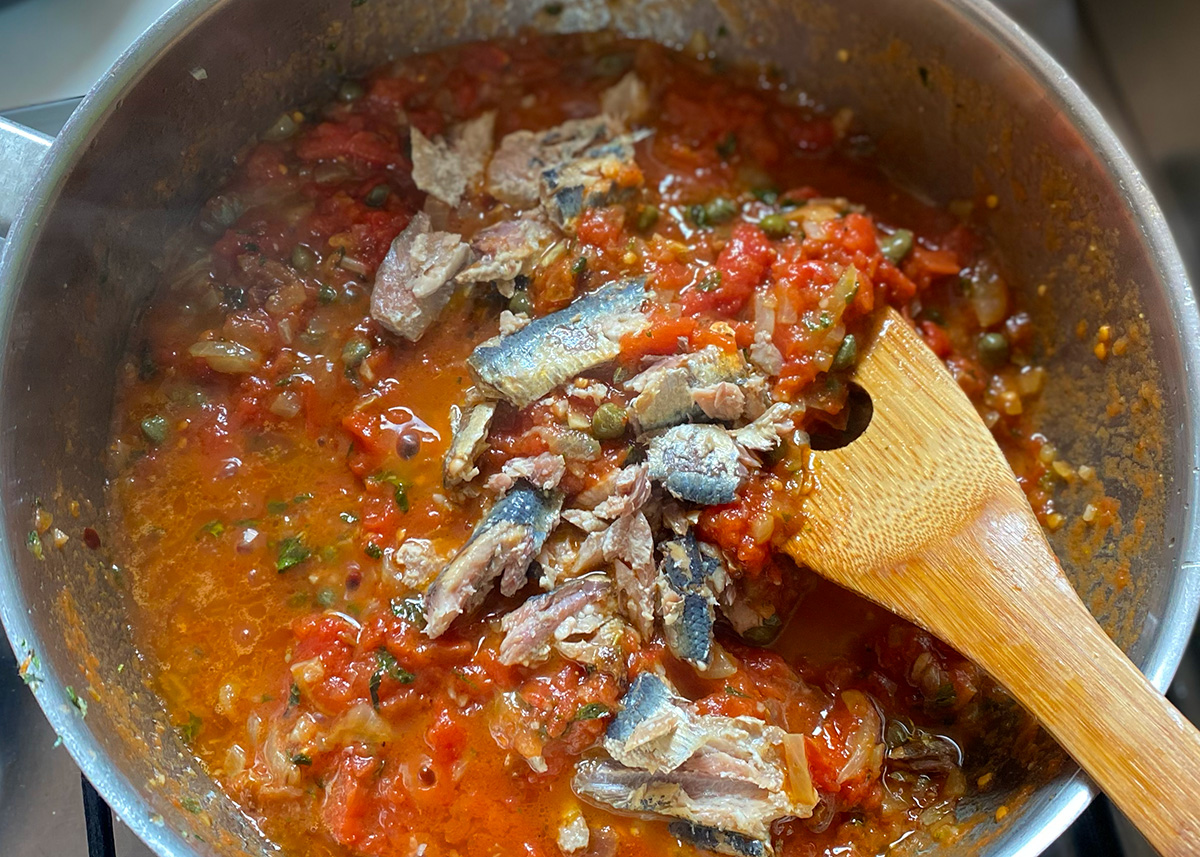
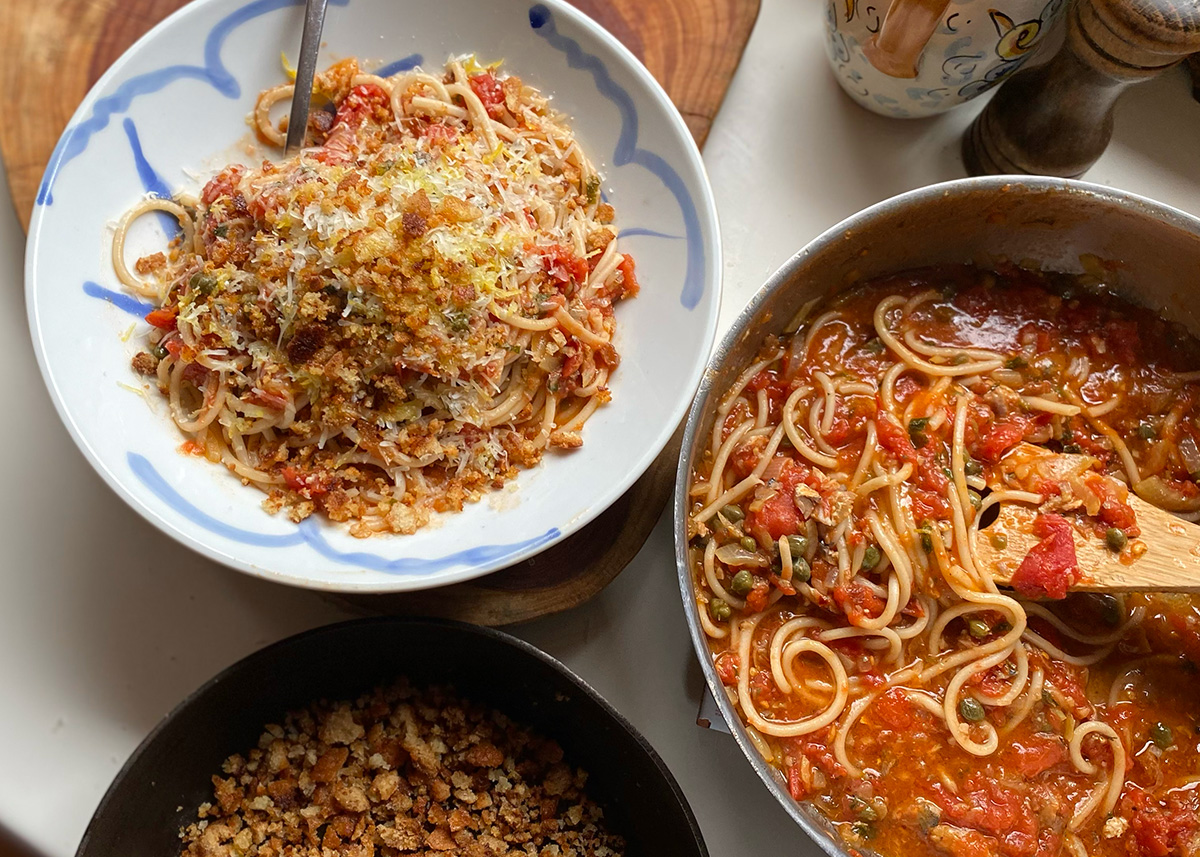
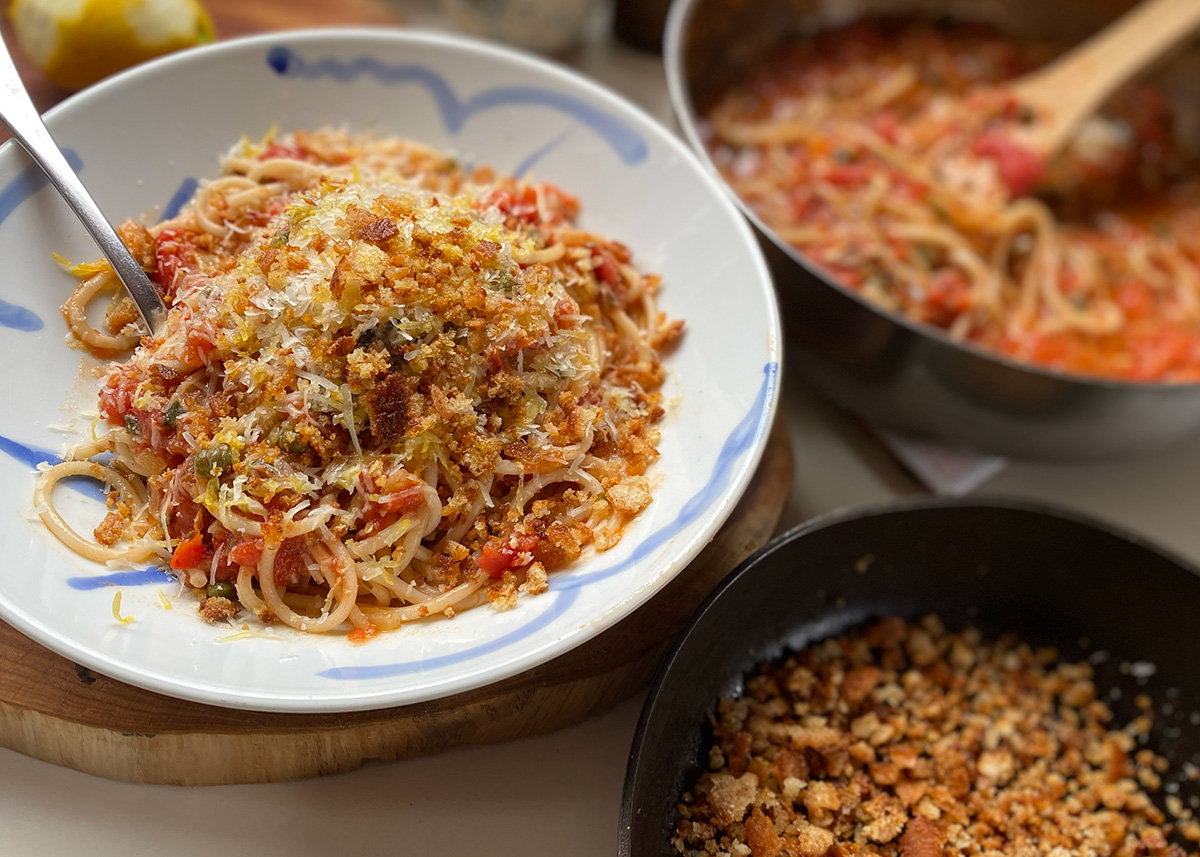
Hints and Tips
A ladle or two of pasta water is the magic ingredient in almost all pasta dishes. That starchy water has wizard-like properties: loosening the sauce, bringing a creaminess without cream and, perhaps most importantly, providing a bridge for the pasta to meet the sauce. Pulling out a mug of the cooking water before you drain the pasta is one of those culinary habits that will change your cooking forever. However, your new habit necessitates revisiting an old habit – the way you salt your pasta water. “As salty as the sea” is out – too much salt and you’ll send the seasoning for the whole dish over the edge; not enough, and the pasta will be insipid. So, to clarify, when I say “pot of salted water” for cooking pasta, I’m imagining about 1½ tablespoons of salt for 500g of pasta in a pot with just enough water to cover your pasta by 2-3cm. Less water equals more starchiness, which is the goal with pasta water, so don’t be too generous when you’re filling your pot.
This recipe is by Danielle Alvarez
